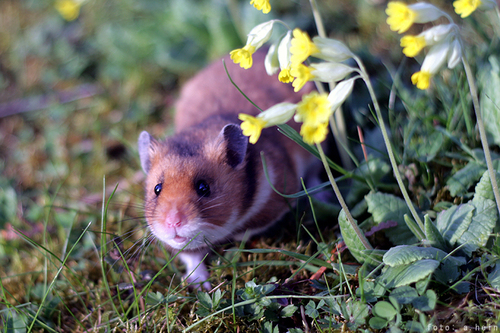
Syrian Hamster
The golden hamster, with its lustrous fur and cheeky pouches, is a nocturnal marvel of the Syrian desert. Known for its solitary lifestyle, this tiny treasure thrives in arid habitats, storing food in its pouches—a behavior as endearing as it is essential for survival.
1-3 years
Lifespan
100.0 - 225.0 g
Weight
Length: 13 - 18 cm
Size
Gold
Color
30 days
Age of Sexual Maturity
19-21 days
Age of Weaning
Endangered
Conservation Status
Decreasing
Population Trend
Characteristics
Mesocricetus auratus, commonly known as the golden hamster, is a small rodent native to arid regions of Syria and Turkey. It has a golden-brown coat, cheek pouches for food storage, and is nocturnal. This solitary creature is a popular pet due to its manageable size and docile nature.
Distribution Range of the Syrian Hamster
Mesocricetus auratus, commonly known as the Syrian hamster or golden hamster, is native to a specific region in the Middle East, primarily in Syria and southern Turkey. Historically, their natural range is concentrated around the Aleppo region in Syria.
Syrian Hamster's Habitat
Environmental Conditions
The Syrian hamster's natural habitat consists of arid and semi-arid environments. They are typically found in areas with a dry climate, characterized by hot summers and mild winters. The region receives limited rainfall, and the vegetation is sparse, consisting mainly of grasses and low-lying shrubs.
Ecological Niche
Syrian hamsters are fossorial, meaning they live and thrive underground. They dig extensive burrow systems to escape the harsh temperatures above ground and to protect themselves from predators. These burrows provide a stable microenvironment where they can store food and rear young. The hamster is primarily nocturnal and omnivorous, feeding on a diet of seeds, fruits, and occasionally insects.
Copyright @ Nature Style Limited. All Rights Reserved.
 English
English